Nature Gardens Rain Catchers
Angelenos have been switching out lawns for alternative turf, and visiting NHM to soak up conservation tips for their gardens and neighborhoods.
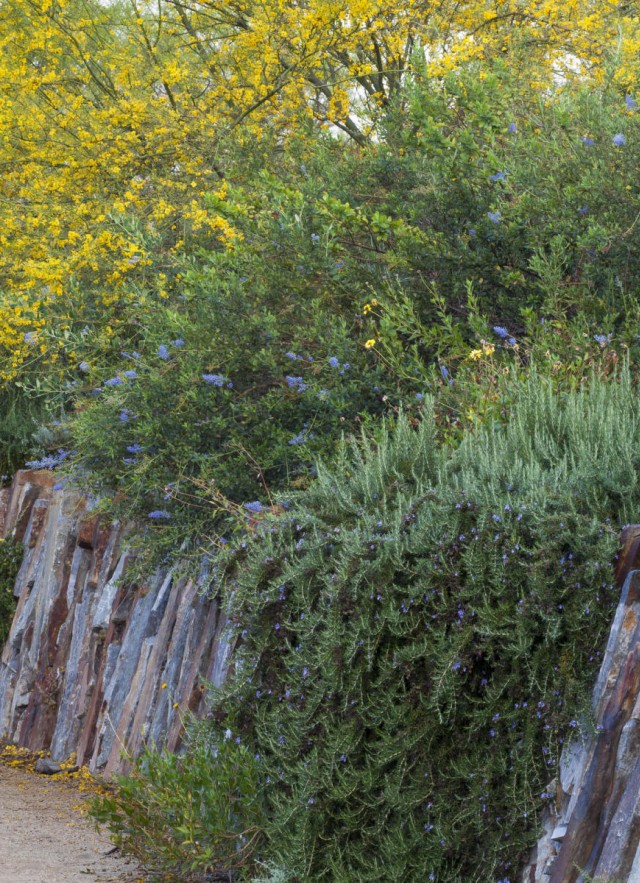
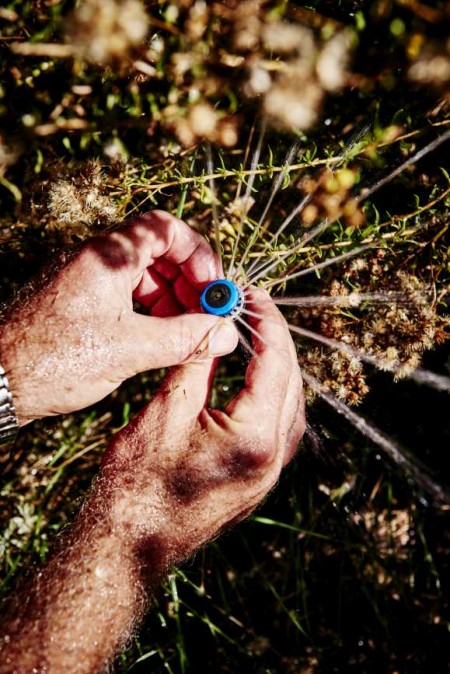
We may have been doused with rain this Winter and Spring, but even a torrent won’t wash away the fact that California is still in a drought. With that in mind, Angelenos have been turning off sprinklers, switching out lawns for alternative turf, and visiting the museum, rain or shine, to soak up conservation tips for their gardens, neighborhoods, and schools.
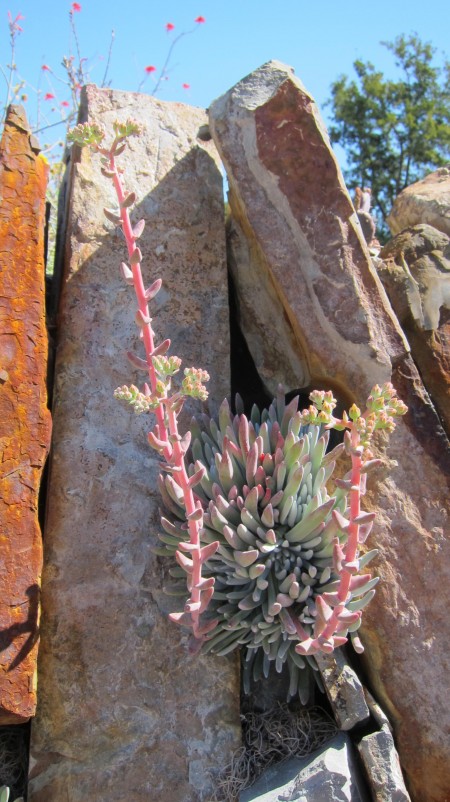
When NHM’s scientists and landscape architects Mia Lehrer and Associates designed the Nature Gardens landscape—formerly a concrete parking lot—they were picky about the plants. First, each of the 600-plus species of native and nonnative plants in the 3½-acre space was handpicked to offer food and shelter for a shifting contingent of crawling and flying inhabitants. Also, the flora couldn’t guzzle water and had to thrive in Southern California’s Mediterranean climate (typically cool, wet winters and warm, dry summers).
We tell visitors that the water that falls here, stays here.
Carol Bornstein, Director of the Nature Gardens
It worked. Visitors who step into this botanical showroom are spotting Allen’s and Anna’s hummingbirds feeding at the California fuchsia blossoms, native bees darting around the purple sages and lavender plants, and butterflies getting a dose of the sugary nectar of yarrow and California aster. But visitors may not spot the hidden water-thrifty systems deployed to keep the space buzzing and blooming.
“For decades, California has been a landscape dreamland of roses and palm trees,” says Richard Hayden, the museum’s head gardener. “Almost any sort of garden would grow with the right amount of water. But here at the Nature Gardens, we are giving L.A. a sense of place, returning the landscape to its roots, using the water we have efficiently to create a sustainable ecosystem that is beautiful, appropriate for the climate, and a haven for wildlife for years to come.”
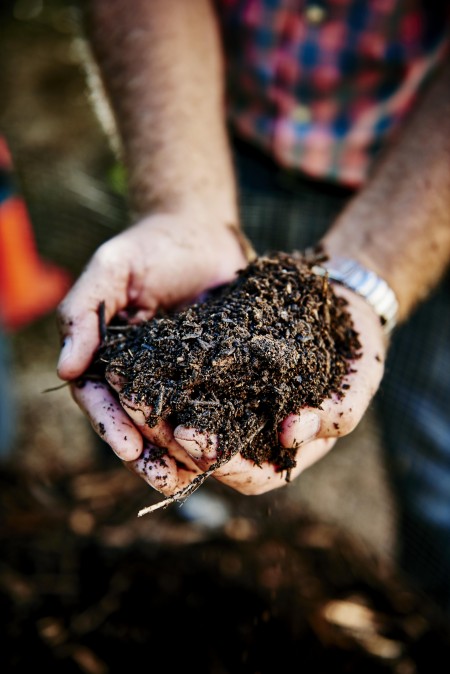
High-tech wATEr wise
On any given day, Hayden is darting around the Nature Gardens overseeing his crew with gardening tools on his belt and an irrigation app on his phone, essential gear to keep the gardens growing smart. There are sensors to check and valves to tweak so that the museum’s water-use mantra—“slow it, spread it, sink it”—is met. NHM installed a computer run irrigation controller system that receives satellite data from the weather station located in the Shadow Garden. It reads temperature, humidity, wind speed, and rainfall and combines that with detailed information Hayden inputs about each of the garden’s 100 irrigation stations to determine the exact amount of water each section requires. Hayden then can tap out the necessary adjustments on his phone.
“We tell visitors that ‘the water that falls here, stays here’,” says Director of the Nature Gardens, Carol Bornstein. “There are so many things you can do to make a garden more harmonious with our Mediterranean climate—choosing plants that need little to no water during our dry summers, watering them during dry spells in winter, and maintaining healthy soil will not only save water, it will make your garden thrive.”
Soil is a sponge
Bornstein says visitors can find the water-conserving tools and techniques that NHM’s gardeners employ every day, right under their feet. There are turf alternatives (lawn substitutes, including buffalo grass and blue sedge) on display in the Nature Garden’s amphitheater. In the Pollinator Garden, the elegant bunch grasses are getting their nourishment from sprinklers that gently deliver rotating streams of water, which means less evaporation. Mulch made from woodchips blankets the ground in many spots and acts like a sunscreen for plants. It helps retain soil moisture, suppresses weeds, curbs erosion, and gives the garden a finished look, Bornstein says. Then there’s the all-important compost. Visitors to the Get Dirty Zone can literally dig into the story of that essential ingredient of healthy soil. Healthy soil in the Nature Gardens is made of living, breathing things as well as oxygen, minerals, and water. There can be a billion microorganisms in a teaspoon of healthy soil, which acts like a sponge, holding and releasing water and nutrients when needed. Visitors playing in the Get Dirty Zone can see how the leaves and twigs break down, and they can look for tiny creatures, like roly-polies and earthworms, living underground.
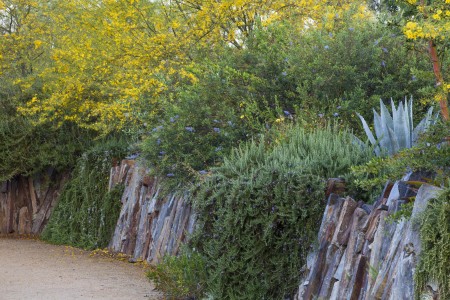
Wrangling the rain
Bornstein, Hayden, and the museum’s gardening crew have added some new features recently, with El Niño in mind. They’ve built a rain garden (also called a bioswale) that you can see near the cottonwood trees in the Pollinator Garden. The gently sloped channel captures rainfall and slows the flow of the storm water so that the liquid bounty stays onsite. That banked groundwater—and the overall water thriftiness—will nourish the plants and wild creatures for visitors of all ages to enjoy for many dry (and hopefully wet) seasons to come.